Just some images from a few relatively recent trips to the neighborhood pond. I’m not sure if I mentioned, but while over there several days back without the camera in hand, I spotted a green heron that was far smaller than typical, and I’ve been trying to get a decent photo of it since. Or even see it again, which hasn’t yet happened. But while attempting this, I’ve been snagging other photos.
A great blue heron (Ardea herodias herodias) was intent on fishing and let me pass close by, much closer than it would have normally – I can say this because this one’s a resident and we’ve met before.
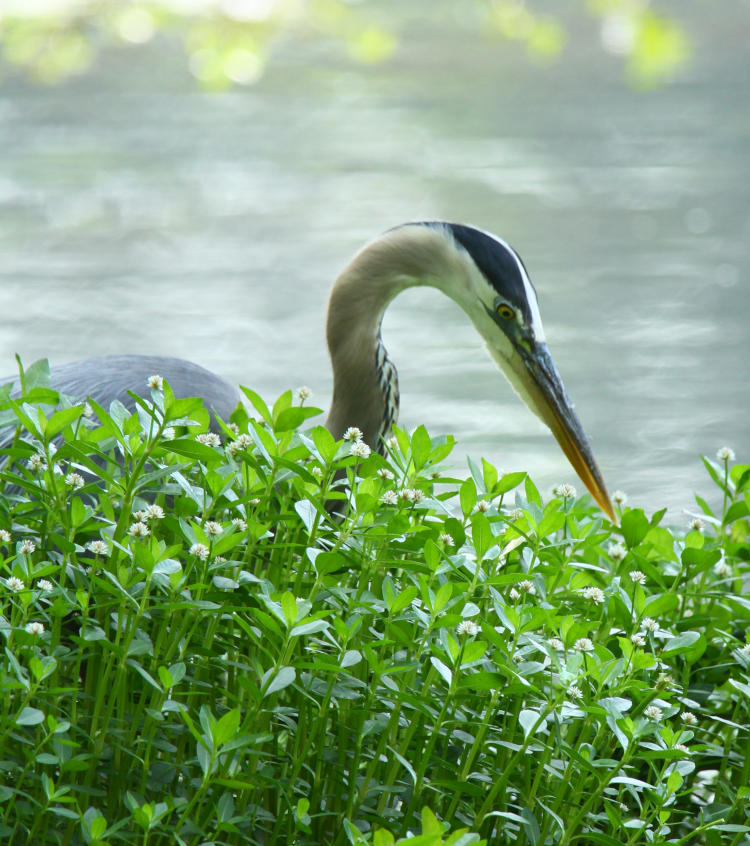
As high as the pond weeds seem here, they’re actually not that big; the heron is just in slightly deeper water while the weeds sprout (more or less) from the surface. As I watched, the heron slowly sank almost from sight.

I knew how thick the weeds were right there, but they’re a favorite spot for the minnows because of just this kind of threat; the heron had a hard time seeing them down there and was leaning in like a nearsighted nature blogger. Had I not already known it was there, I could have easily missed it at this point. But the heron didn’t miss.
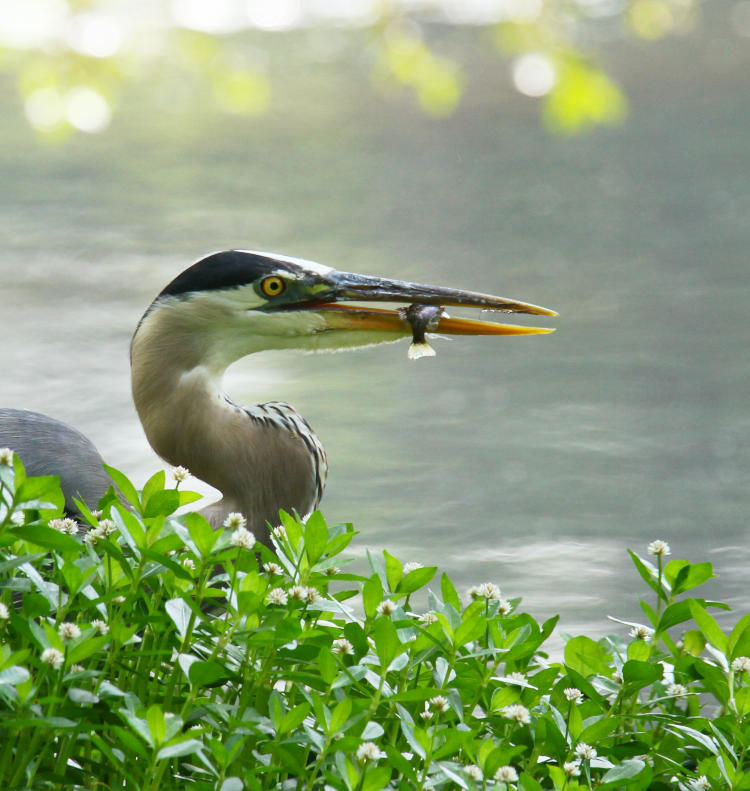
Not much of a meal for the time spent stalking it, but better than nothing. It held the fish like this for a short while, which was odd because a fish this size hardly needs positioning to be swallowed, but I got my shots before it disappeared anyway.
Not too far away, I spotted a common snapping turtle (Chelydra serpentina) in the exact same muddy channel as before, so I’m assuming it’s the same one. This time, I fired some frames as it passed by, submerged now as the water got just a wee bit deeper.
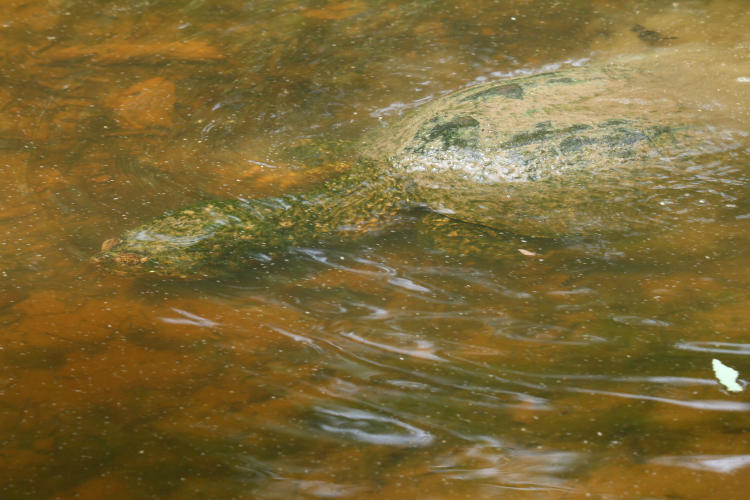
I realize this is a little hard to make out, given the coloration and the distortion of the water, but that’s the turtle’s back to the right rising above the surface, while its head and neck stretch out to the left, colored a mottled deep green from the adhering algae. We’ll go in closer.
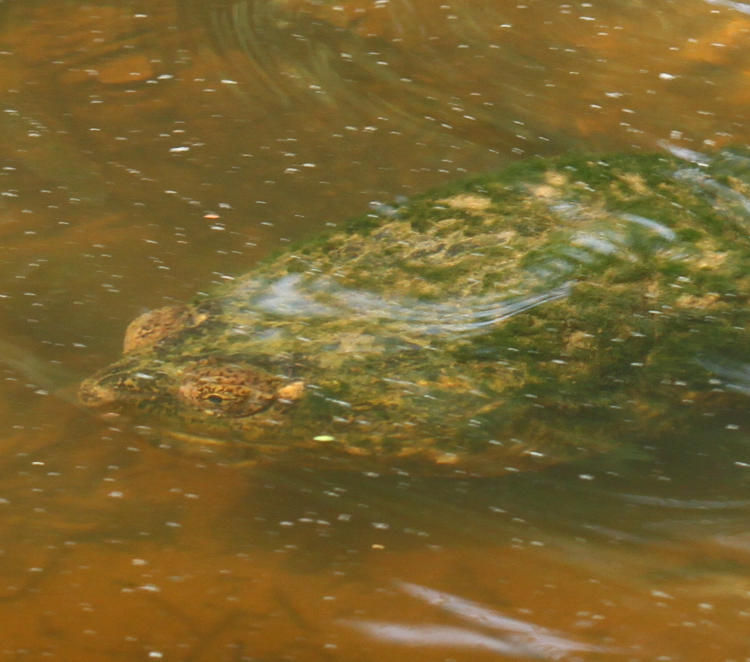
Still obscure, but the eyes can now be seen, questing for likely the same minnows as the heron – when it can’t catch ducklings or goslings of course. Snappers are serious predators of baby waterfowl, but it all maintains nature’s balance.
I’ve only seen one beaver over there so far this season, right as the light’s falling at dusk, but I won’t affirm that this is the only one – been fooled by that before. No pics yet, though I got this frame as proof of activity while over at night after the next subject.
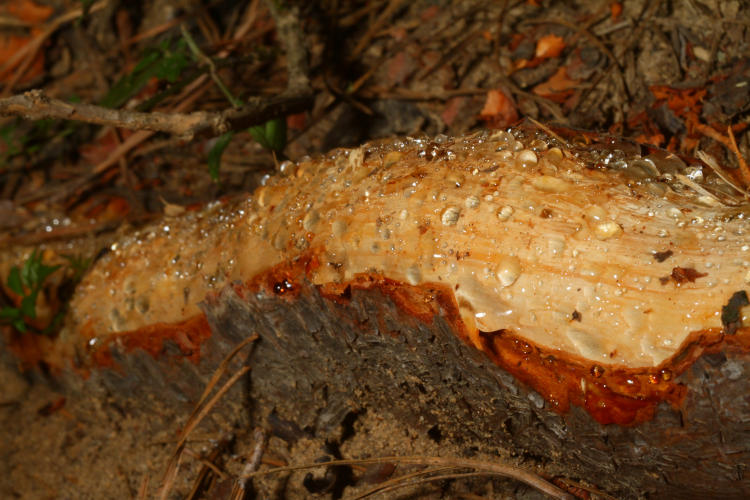
That’s a tree root near the edge of the water, with the bark stripped off – recently, as evidenced by the ‘sweating’ sap. This kind of evidence is a lot sparser than last year, so it’s easy for me to believe there really is only one, though why this might be the case I can’t say – they typically raise their young for a couple of years before kicking them out, and my views of the one wasn’t sufficient to give me any idea about size to tell if it was an adult or juvenile. Perhaps we’ll see later on.
But that was an incidental capture, while I was specifically after this:
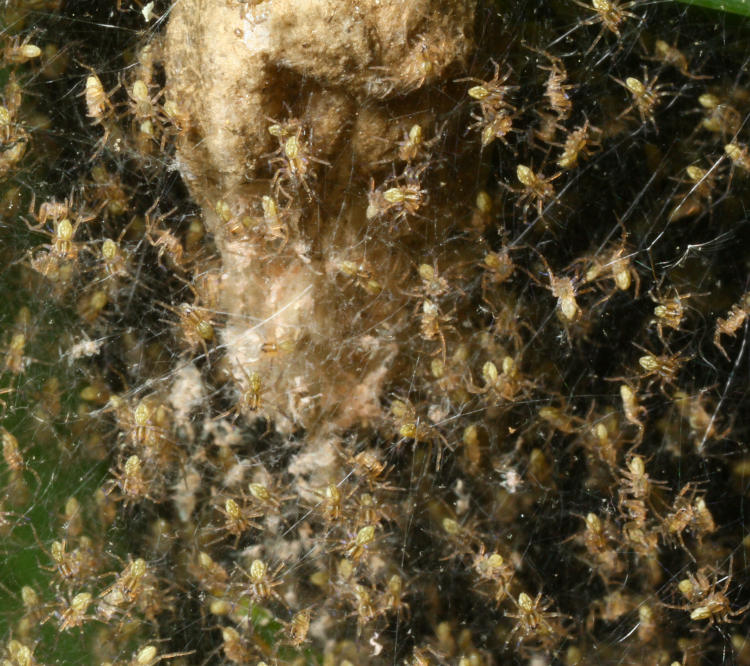
What we see here is a batch of newborn spiders in the nursery webbing around the egg sac. I’ve seen this kind of thing before and, also given its proximity to the water, I’m identifying these as likely fishing spiders, genus Dolomoedes. I never spotted the mother despite looking carefully, but I’m almost certain that they’re six-spotted fishing spiders (Dolomedes triton,) because that’s the only species that I’ve found in the area. This was only with the Mamiya 80mm macro without the extention and I wanted more detail, so I returned later on with the reversed 28-105 ‘super macro.’ This was a little better.
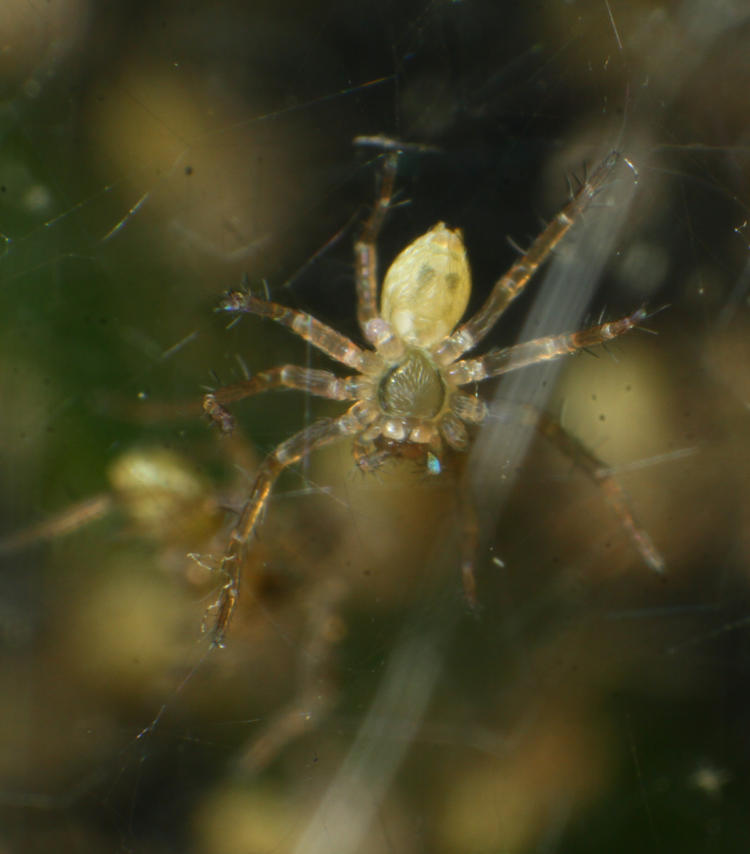
Now, here was the challenge: they were small enough to barely make out any detail even at high magnification, and remaining within the nursery. This meant that the ones closest and easiest to see were also on the inside wall of the nursery, and thus showing their undersides to me. Eventually, I located one in clear view that allowed me more of a portrait shot.

Still could be clearer, but probably not while still in the web, and that eye pattern just about confirms that they’re fishing spiders. I had no way of introducing scale, so the best I can say is they’re only a couple of millimeters in total leg spread, easy to mistake for chaff – a threat to gnats and little else. They can eventually get to have a leg span the size of your palm, so in the range of a hundred times larger, though I won’t vouch for this occurring in a single season; a lot on arthropods have their entire life cycle in a single warm season, but spiders can weather over and might last several years. Still, the size difference is remarkable, and you can see an adult and newborns here – just, not necessarily her newborns.
More to come – whittling away at the blog folder.



















































